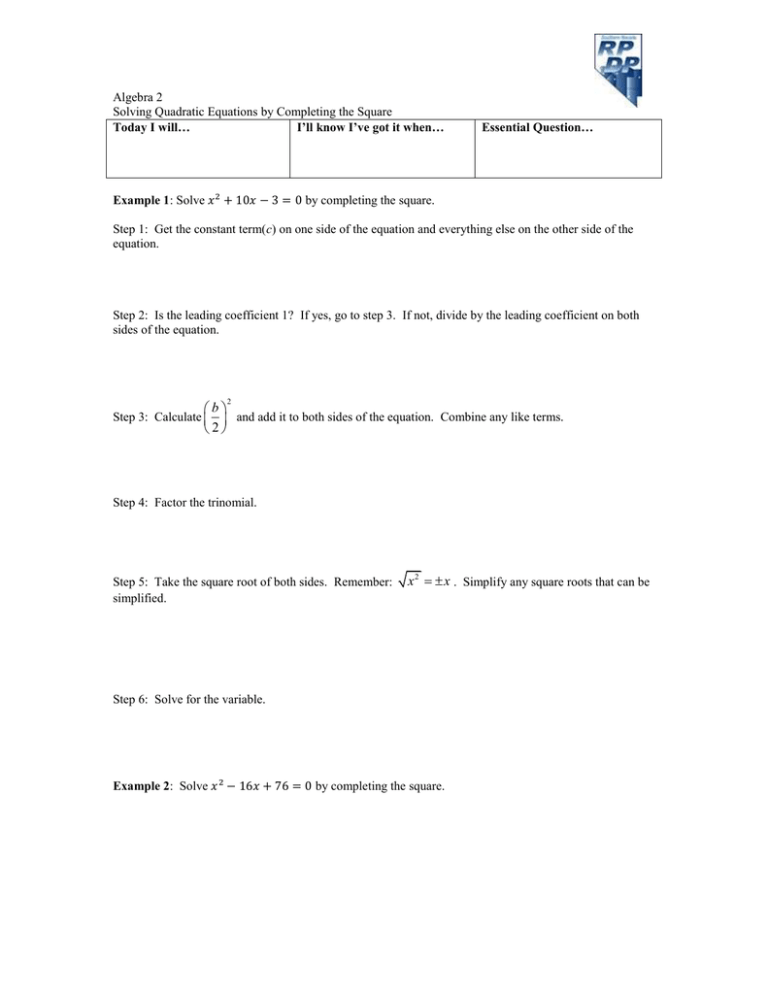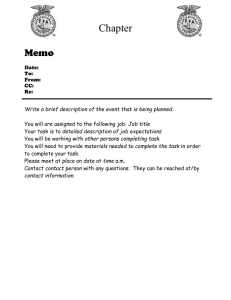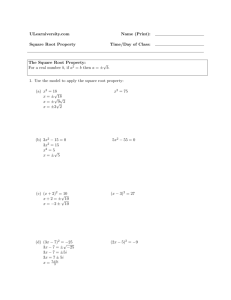Solve by Completing the Square Class Notes (doc)
advertisement

Algebra 2 Solving Quadratic Equations by Completing the Square Today I will… I’ll know I’ve got it when… Essential Question… Example 1: Solve 𝑥 2 + 10𝑥 − 3 = 0 by completing the square. Step 1: Get the constant term(c) on one side of the equation and everything else on the other side of the equation. Step 2: Is the leading coefficient 1? If yes, go to step 3. If not, divide by the leading coefficient on both sides of the equation. b 2 2 Step 3: Calculate and add it to both sides of the equation. Combine any like terms. Step 4: Factor the trinomial. Step 5: Take the square root of both sides. Remember: simplified. x 2 x . Simplify any square roots that can be Step 6: Solve for the variable. Example 2: Solve 𝑥 2 − 16𝑥 + 76 = 0 by completing the square. Example You Try: Solve 𝑥 2 + 6𝑥 − 8 = 0 by completing the square. Example 3: Solve 3𝑥 2 − 6𝑥 + 12 = 0 by completing the square. Example 4: Solve −4𝑟 2 + 21𝑟 = 𝑟 + 13 by completing the square. Example You Try: Solve 5𝑥 2 − 10𝑥 + 30 = 0 by completing the square. When is completing the square a good choice for solving a quadratic equation?



